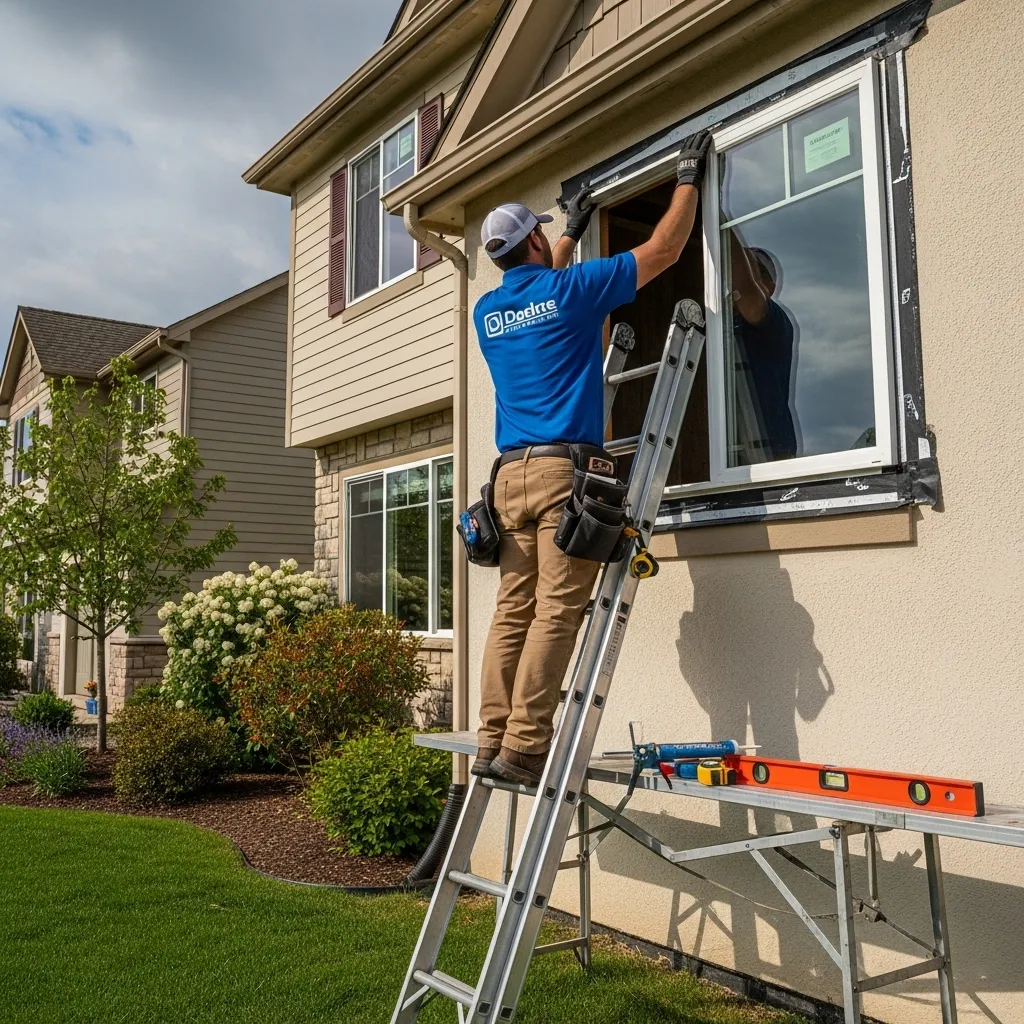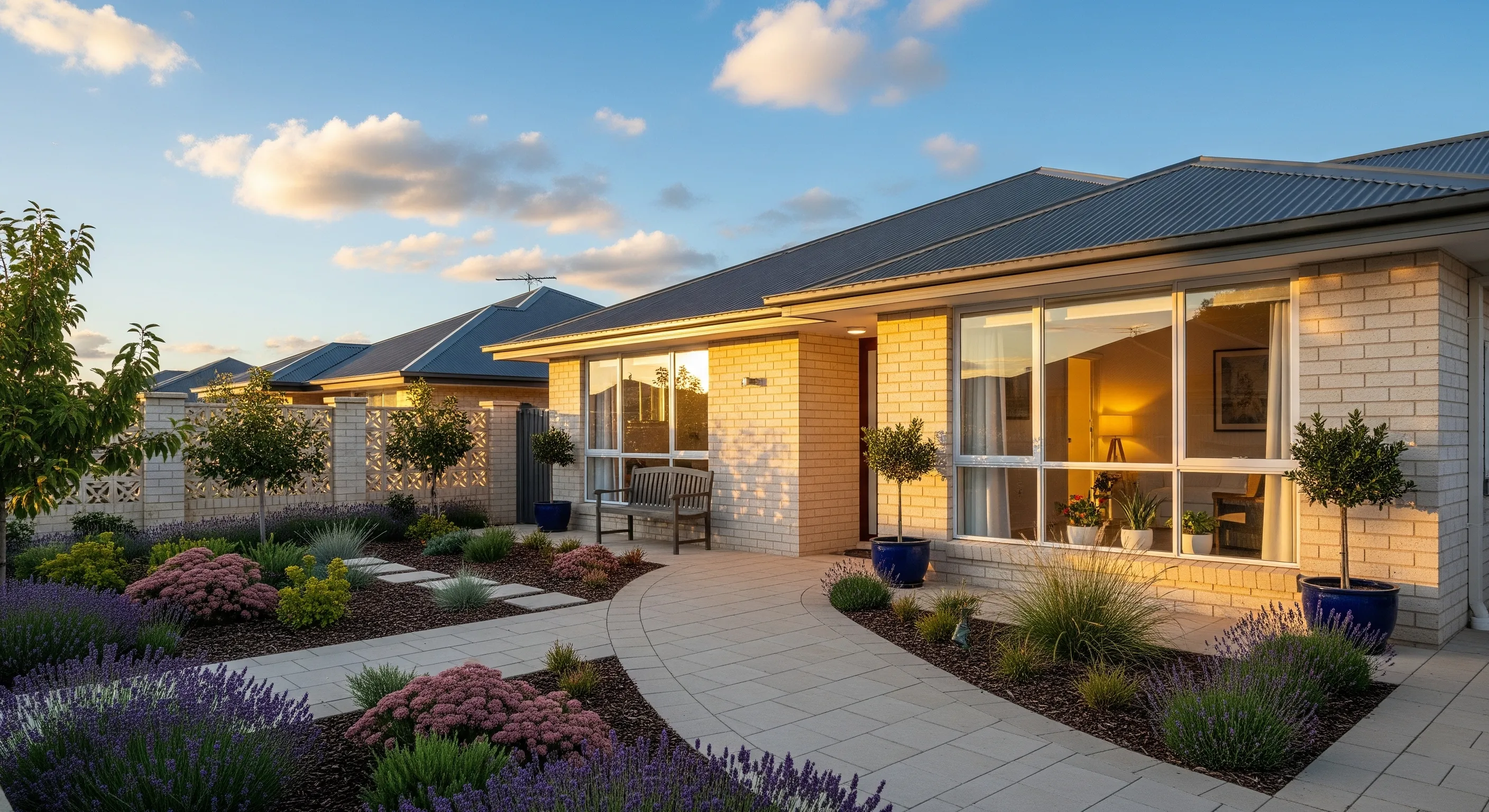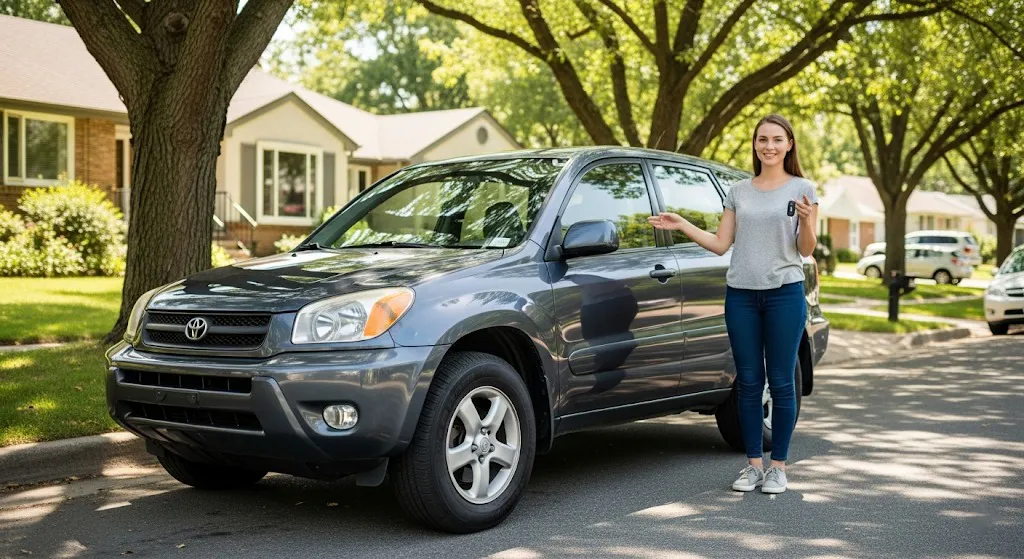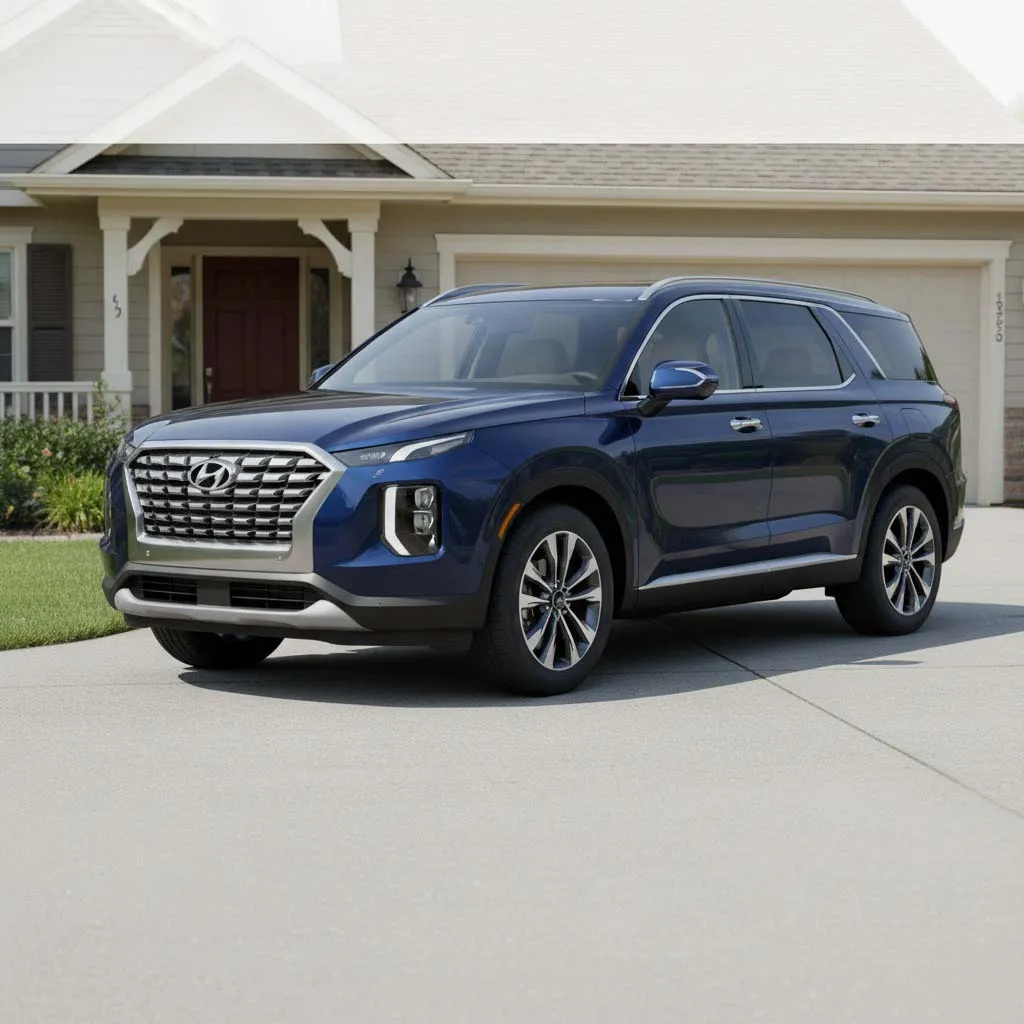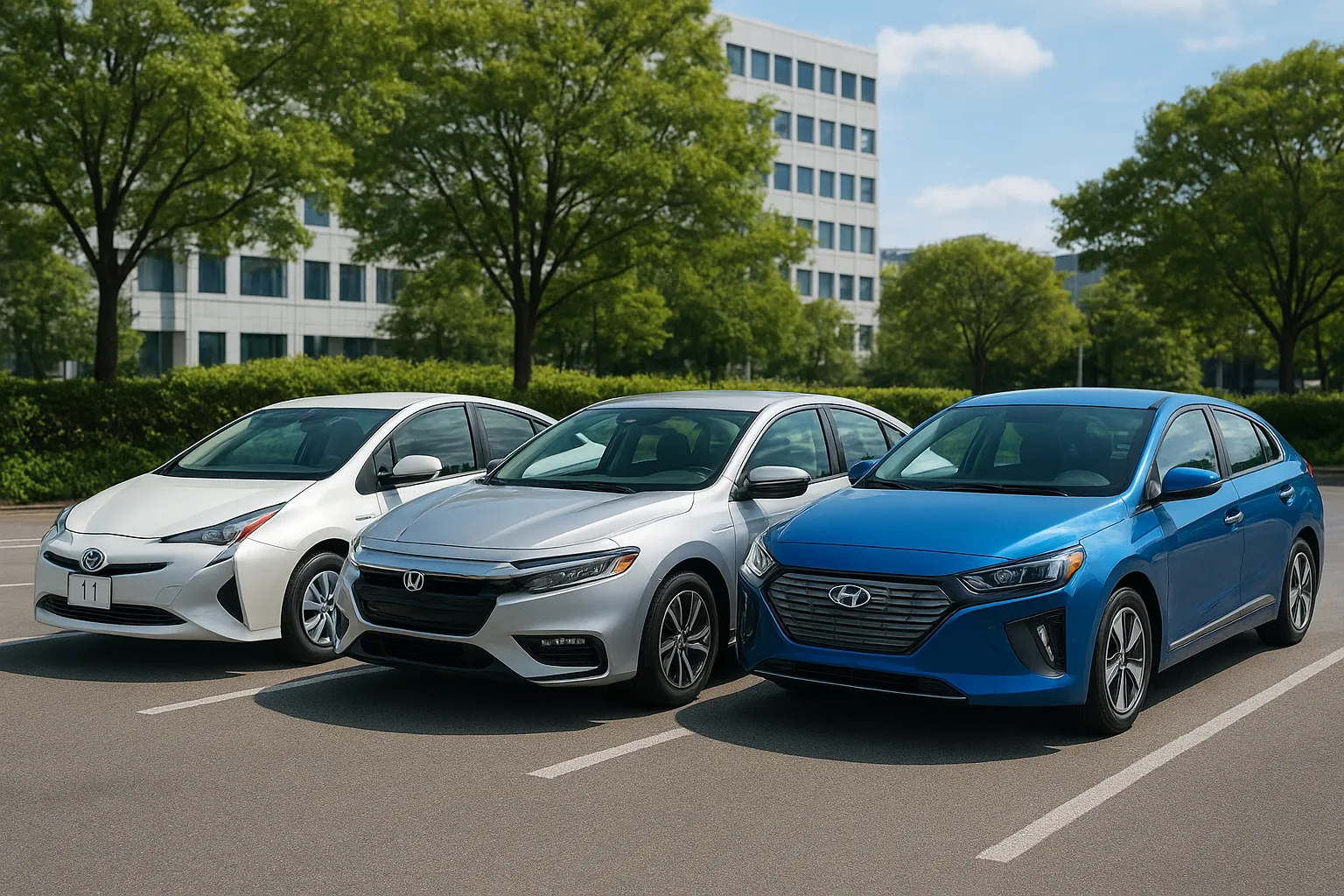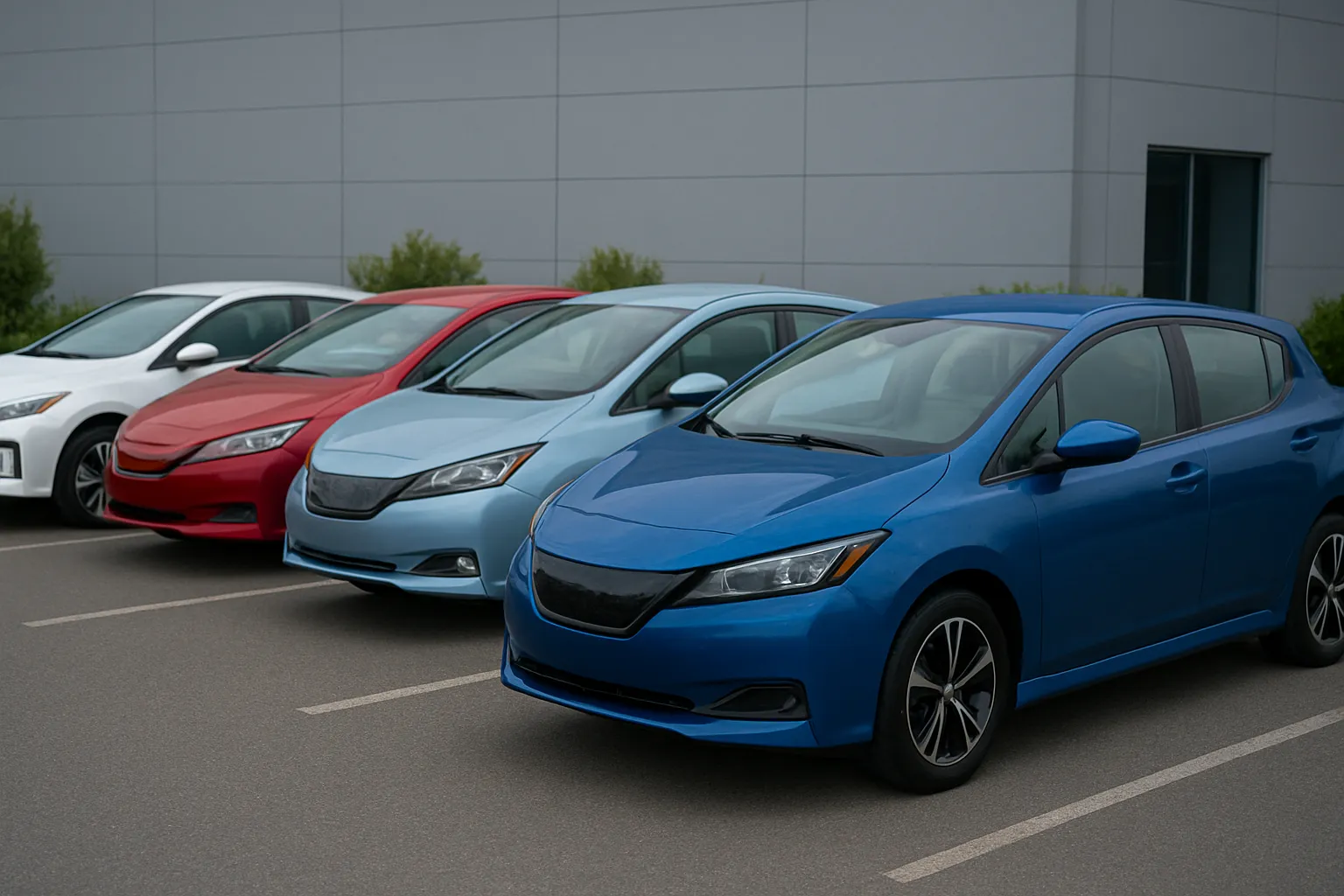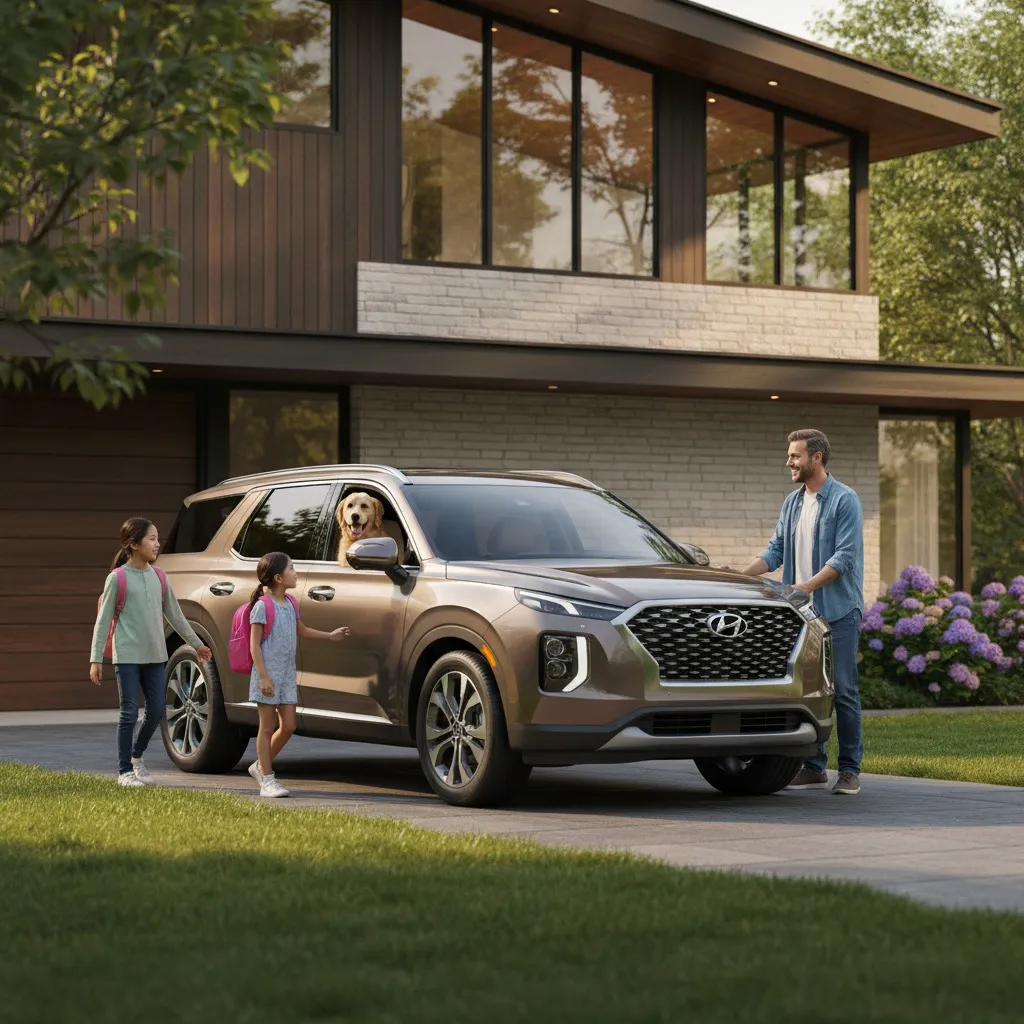Hyundai Palisade resale value and ownership costs
The Hyundai Palisade has become a dominant force in the three-row SUV segment since its introduction, celebrated for its upscale design, extensive features, and competitive pricing. For many prospective buyers, the initial purchase price is just one piece of the puzzle. The true financial picture comes into focus when considering the total cost of ownership over several years, a calculation that includes everything from depreciation and insurance to maintenance and fuel. This comprehensive article delves into the intricate details of the Hyundai Palisade's resale value and the various factors that contribute to its long-term ownership costs, providing a clear and thorough analysis for anyone considering this popular vehicle. By examining the key metrics of value retention, running expenses, and long-term durability, we aim to provide a complete understanding of what it truly costs to own a Hyundai Palisade over time.
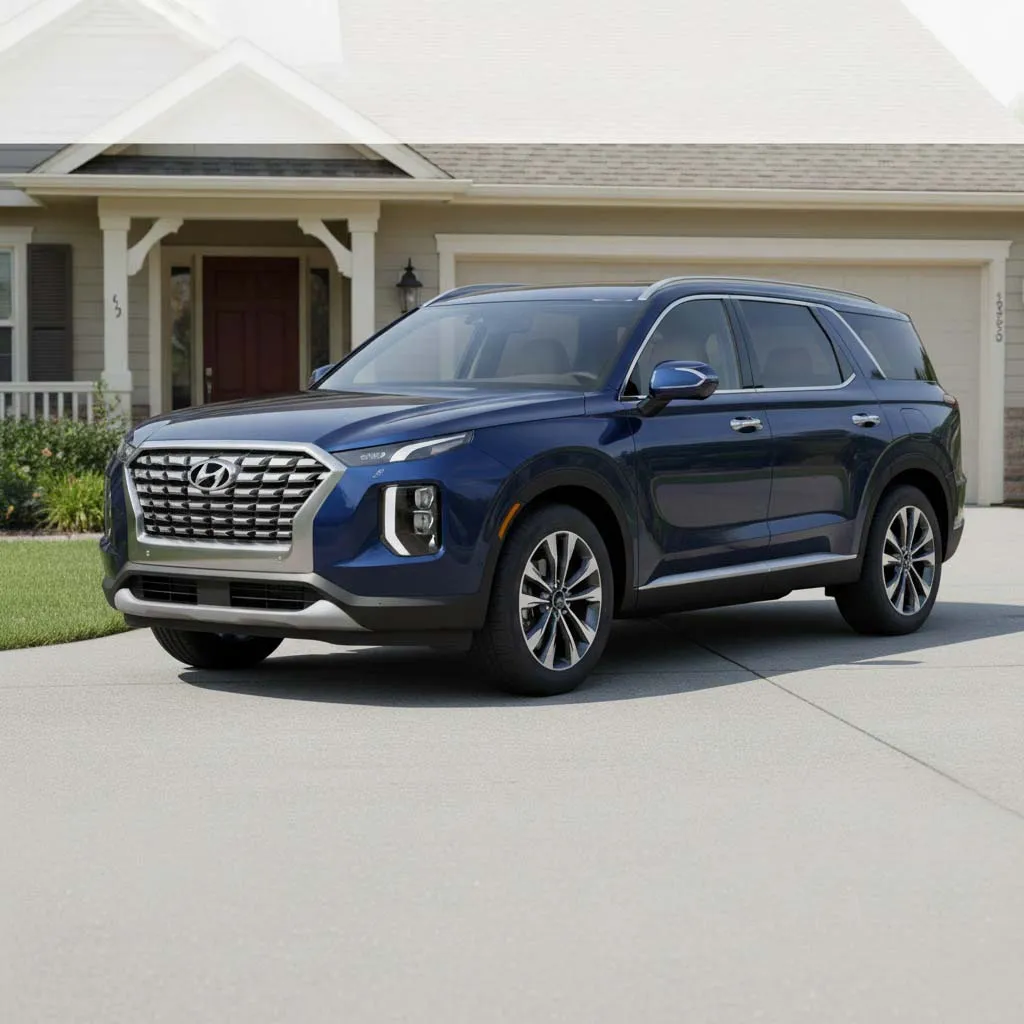
A Look at Depreciation: The Single Biggest Factor
Depreciation is the most significant cost of car ownership for most new vehicle buyers. It refers to the decrease in a vehicle's value over time. For the Hyundai Palisade, its depreciation rate is an essential metric to evaluate its long-term financial viability. While Hyundai as a brand has been improving its reputation for value retention, the Palisade's performance in this area is a key consideration.
Understanding Hyundai Palisade Depreciation Rates
The Hyundai Palisade's depreciation value is generally considered moderate compared to some of its rivals. According to various automotive data sources, a new Palisade is expected to depreciate by approximately 40-47.5% over the first five years of ownership. This means that after five years, the vehicle will likely retain between 52.5% and 60% of its original value. While this is a substantial loss in value, it is often on par with or even better than the average for the midsize SUV segment. A three-year-old Palisade, for instance, typically sees a depreciation of around 33%. This is a crucial number for those who plan to trade in or sell their vehicle relatively early in its lifespan.
The rate of depreciation is not static; it is most rapid in the first two to three years of a vehicle's life and then levels off. The high demand for the Palisade, particularly in the used car market, helps to buoy its resale value. Its stylish design, high-end features, and strong reputation for quality make it a sought-after vehicle even after a few years of ownership, which can mitigate the effects of depreciation. This is a considerable advantage for owners who may be concerned about losing too much value.
Comparing Palisade Depreciation to Key Competitors
When evaluating the Palisade's depreciation, it is essential to compare it to its primary competitors in the three-row SUV market. The Kia Telluride, its corporate cousin, has consistently been praised for its strong resale value, often holding its value slightly better than the Palisade. However, the Palisade's value retention is often comparable to or better than other popular models like the Ford Explorer and the Volkswagen Atlas. The Toyota Highlander, a long-standing segment leader, often enjoys a legendary reputation for holding its value, thanks to Toyota's brand perception of reliability.
Here is a general comparison of five-year depreciation rates for some popular three-row SUVs:
- Hyundai Palisade: Approximately 40-47.5%
- Kia Telluride: Generally slightly lower than the Palisade, often in the 38-45% range.
- Toyota Highlander: Known for excellent value retention, often depreciating less than 40%.
- Ford Explorer: Varies, but can be higher than the Palisade.
- Honda Pilot: Tends to have solid, but not class-leading, resale value.
While the Palisade may not always be the absolute leader in value retention, it performs well within its class, especially when considering its more affordable initial purchase price and the generous features it offers at each trim level. A savvy buyer can leverage this knowledge to make an informed decision, understanding that the Palisade provides a strong balance of upfront value and reasonable long-term financial performance.
The Cost of Keeping it Running: Maintenance and Repairs
Beyond the initial purchase and depreciation, the cost of keeping a vehicle on the road is a significant part of the total ownership equation. The Hyundai Palisade's maintenance costs are a key component of this calculation. The good news for owners is that Hyundai has a strong reputation for reliability and often provides a comprehensive warranty that helps to offset some of the early ownership expenses.
Hyundai's Maintenance Schedule and Associated Costs
Hyundai provides a clear maintenance schedule for the Palisade, with routine service intervals typically every 8,000 miles or 12 months, whichever comes first. These regular appointments are essential for maintaining the vehicle's health and preserving its resale value. Early services are generally straightforward and affordable, primarily consisting of oil changes, filter replacements, and tire rotations. As the vehicle ages and the mileage increases, more significant services are required, such as:
- 16,000 miles: In addition to the standard oil change, this service includes a climate control air filter replacement.
- 24,000 miles: This is another standard service, but the air cleaner filter is also typically replaced.
- 48,000 miles: A more substantial service, this one includes replacing spark plugs, brake fluid, and the climate control air filter, in addition to the regular oil and filter change.
- 120,000 miles: A major service interval that includes a coolant replacement.
The overall cost of maintenance for the Palisade is generally considered to be on the lower end compared to some luxury or European competitors. This is due to the availability of parts and the widespread network of certified mechanics. It is always recommended to follow the manufacturer's specific maintenance schedule and use genuine Hyundai parts to ensure the longevity and reliability of the vehicle.
The Role of Warranty in Reducing Ownership Costs
One of the most compelling aspects of owning a Hyundai is its industry-leading warranty program. The Palisade comes standard with a 10-year/100,000-mile powertrain limited warranty and a 5-year/60,000-mile new vehicle limited warranty. This extensive coverage provides a significant peace of mind and can dramatically reduce potential repair costs during the first several years of ownership.
This warranty is a powerful tool for both the first owner and any subsequent owners, as the balance of the powertrain warranty is often transferable. This makes a used Palisade a very attractive proposition for a buyer, knowing that major, and potentially expensive, components are covered for a significant period. By minimizing out-of-pocket expenses for unexpected repairs, the warranty directly contributes to a lower total cost of ownership.
Fuel and Insurance: Ongoing Expenses Explained
Two of the most predictable and recurring costs of vehicle ownership are fuel and insurance. These expenses are directly tied to the type of vehicle you own, your driving habits, and a number of personal factors.
Hyundai Palisade's Fuel Economy and Your Wallet
The Hyundai Palisade's fuel efficiency is competitive within its segment. It is powered by a 3.8-liter V6 engine that delivers a respectable balance of power and economy. The EPA-estimated fuel economy ratings for the Palisade are typically around 19 mpg in the city, 26 mpg on the highway, and 22 mpg combined for a front-wheel-drive model. All-wheel-drive models will see a slight decrease in these numbers.
For a large, three-row SUV, these are solid figures. However, fuel costs can add up quickly, especially with fluctuating gas prices. The total cost will depend on a number of factors:
- Your driving habits: Aggressive acceleration and braking will reduce fuel economy.
- City vs. highway driving: The Palisade is more efficient on the highway.
- Fuel prices in your region: The price per gallon has a direct impact on your annual fuel budget.
While there may be more fuel-efficient options available, such as hybrid SUVs, the Palisade's fuel economy is a reasonable trade-off for its size, comfort, and performance. Understanding these numbers is crucial for creating an accurate budget for vehicle ownership.
Insurance Costs for the Hyundai Palisade
The Hyundai Palisade's insurance cost is influenced by a multitude of factors. As a midsize, three-row SUV, it is generally considered a safe vehicle, which can help to keep premiums lower. Safety features, crash test ratings, and the cost of repairs all play a role. The average annual insurance cost for a Palisade can vary widely based on:
- Driver's age and driving history: Younger drivers and those with a history of accidents will pay more.
- Location: Urban areas with higher rates of theft and accidents will have higher premiums.
- Trim level: Higher-end trims with more technology can be more expensive to repair, leading to higher insurance costs.
- Coverage level: A full coverage policy will be significantly more expensive than a basic liability policy.
While average costs can be quoted, it's essential for individuals to get personalized quotes from multiple insurance providers to find the best rate. The Palisade's strong safety ratings from organizations like the National Highway Traffic Safety Administration (NHTSA) and the Insurance Institute for Highway Safety (IIHS) often contribute to more favorable insurance rates.
Factors That Influence Resale Value Over Time
The long-term resale value of a Hyundai Palisade is not solely determined by its initial price and depreciation rate. A number of other factors come into play, and understanding these can help an owner maximize the return on their investment.
The Impact of Condition and Maintenance Records
The single most important factor in maximizing a vehicle's resale value is its condition, both cosmetic and mechanical. A car that has been well-maintained and looks clean will always fetch a higher price.
- Cosmetic Condition: This includes the cleanliness of the interior and the exterior. A car with a scratch-free paint job, no dents, and a spotless interior signals to a buyer that the vehicle has been cared for.
- Maintenance History: A complete and detailed service history is invaluable. Having records of all oil changes, tire rotations, and major services proves that the vehicle has been properly cared for. This builds trust with a potential buyer and can justify a higher asking price.
Market Trends and Model Popularity
The demand for a vehicle model in the used car market is a powerful determinant of its resale value. The Hyundai Palisade's popularity has been a major factor in its strong value retention. As a well-regarded and highly sought-after three-row SUV, there is consistent demand for both new and used models.
Furthermore, general market trends, such as the overall demand for SUVs versus sedans, can affect resale value. The Palisade is well-positioned in a highly popular segment, which works in its favor. Keeping an eye on the timing of a sale is also a wise strategy, as selling before a major model redesign can help a vehicle retain its value better than selling a generation behind.
The Role of Trim Level, Features, and Modifications
The specific trim level and features of a Hyundai Palisade can also impact its resale value. Higher trims, such as the Limited or Calligraphy, often come with premium features like Nappa leather seating, a digital gauge cluster, and a panoramic sunroof. While these options increase the initial purchase price, they can also make the vehicle more desirable in the used market, potentially leading to a better return.
However, it is important to note that certain modifications can harm a vehicle's resale value. Aftermarket changes that deviate significantly from the factory-original design, such as custom paint jobs, large wheels, or performance enhancements, may appeal to a niche audience but can turn off a wider range of buyers, ultimately lowering the vehicle's market value.
The Long-Term Durability and Reliability of the Palisade
The long-term reliability of the Hyundai Palisade is a critical consideration for total cost of ownership. A vehicle that is prone to major mechanical issues will have a higher cost of ownership, regardless of its initial price or depreciation rate. Hyundai has made significant strides in improving its quality and reliability, and the Palisade is a testament to that effort.
Expected Lifespan and Common Issues
The Palisade, with proper care and maintenance, is capable of a long and reliable lifespan. Many automotive experts and owners believe that a Hyundai Palisade can last for 200,000 to 250,000 miles or even more. The key to achieving this high mileage is adherence to the recommended maintenance schedule and prompt attention to any potential issues.
While the Palisade has a strong reputation, early model years (2020 and 2021) did have some reported minor issues, such as infotainment bugs or minor electrical quirks. These were largely addressed in later model years and through software updates. As with any vehicle, wear and tear on components like brakes and suspension will occur over time, especially given the Palisade's size and weight.
The Benefits of a Strong Powertrain and Quality Components
The Palisade's durability is underpinned by its robust 3.8L V6 engine and reliable transmission. The powertrain has proven to be a solid performer. Furthermore, Hyundai's commitment to using high-quality materials and components in the Palisade's construction contributes to its long-term durability. This is particularly evident in the interior, which has been widely praised for its premium feel and build quality.
The comprehensive warranty also provides an extra layer of confidence, knowing that Hyundai stands behind the quality of its product for an extended period. This commitment to long-term ownership is a significant selling point for the brand and a major advantage for Palisade owners.
Maximizing Your Resale Value: A Practical Checklist
For any Hyundai Palisade owner, whether you plan to keep the vehicle for a few years or a decade, there are actionable steps you can take to protect and maximize its resale value. These best practices are not just about a higher selling price; they're about demonstrating responsible ownership.
Proactive Maintenance and Record-Keeping
- Follow the Maintenance Schedule: Strictly adhere to the service intervals recommended by Hyundai. This is the single most important action you can take.
- Keep Detailed Records: Create a file (either digital or physical) to store all service receipts and records. This creates a clear paper trail that will be highly valued by a prospective buyer.
- Use Genuine Parts: When replacements are needed, insist on using Original Equipment Manufacturer (OEM) parts. This ensures compatibility and maintains the vehicle's integrity.
Protecting the Vehicle's Condition
- Regular Cleaning: Regularly wash and wax the exterior to protect the paint. Clean and vacuum the interior to prevent wear and tear.
- Address Minor Issues: Fix small dents, scratches, and chips as soon as they occur. Small repairs now can prevent a significant hit to resale value later.
- Protect the Interior: Use floor mats and seat covers to prevent wear and tear on the upholstery.
Smart Ownership Decisions
- Mind the Mileage: While this is often unavoidable, lower mileage will always lead to a higher resale value.
- Avoid Over-Modifying: Keep the vehicle as close to its factory-original condition as possible. This makes it more appealing to a broader audience.
- Timing the Sale: If possible, try to sell your vehicle before a major redesign is released, as new generations can make older models seem less desirable.
Conclusion
The Hyundai Palisade has proven to be an exceptional value proposition in the three-row SUV segment. Its attractive styling, premium interior, and impressive list of standard features make it a formidable competitor. But when you look beyond the initial purchase price, the picture of its total cost of ownership becomes even clearer. The Palisade demonstrates a moderate depreciation rate, a competitive advantage that, while not class-leading, is certainly strong. Its maintenance and repair costs are generally affordable, and its exceptional warranty coverage provides a valuable safety net against major expenses.
While ongoing costs like fuel and insurance are influenced by individual factors, the Palisade's performance in these areas is on par with, or better than, many of its rivals. For a discerning buyer, understanding the full scope of these costs is the key to making a truly informed decision. The Hyundai Palisade's resale value is strong because it is a desirable vehicle with a solid reputation for quality and reliability. By following a few simple best practices, owners can ensure their Palisade holds its value well, providing a rewarding and financially sound ownership experience from day one to the day they sell.


